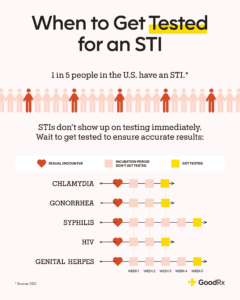Screening STI-Urine
A urinalysis detects the presence of sexually transmitted infections. Urine chlamydia and gonorrhea tests are much more pleasant than having your cervix in women or urethra in men swabbed and are quickly becoming standard practice. However, It may be more challenging to find urine testing for other STIs, such as human papillomavirus (HPV) or trichomoniasis.
Your doctor may suggest this test as a regular screening of your health condition. Because many STIs have no symptoms, testing is the only way to detect them. People who aren’t tested regularly can spread STIs to their partners without knowing it.

A positive dipstick test for leukocyte esterase or increased numbers of white blood cells in the microscopic examination suggests chlamydia or gonococcal infection. However, because of its low sensitivity, this test should not be considered an effective screening method for these infections. Urine testing makes it easier for people to undergo STI testing as part of their routine health care. Adolescents with urinary symptoms should be tested for both UTIs and STIs. Urinalysis results may be helpful to direct initial therapy. (1)
STIs are prevented by adopting hygienic measures during sexual contact. STIs are treated with antibiotics.
References:
- Huppert, J. S., Biro, F., Lan, D., Mortensen, J. E., Reed, J., & Slap, G. B. (2007). Urinary symptoms in adolescent females: STI or UTI? The Journal of adolescent health: official publication of the Society for Adolescent Medicine, 40(5), 418–424. https://doi.org/10.1016/j.jadohealth.2006.12.010
- Figure from https://www.goodrx.com/health-topic/stds/when-do-std-symptoms-start-showing

